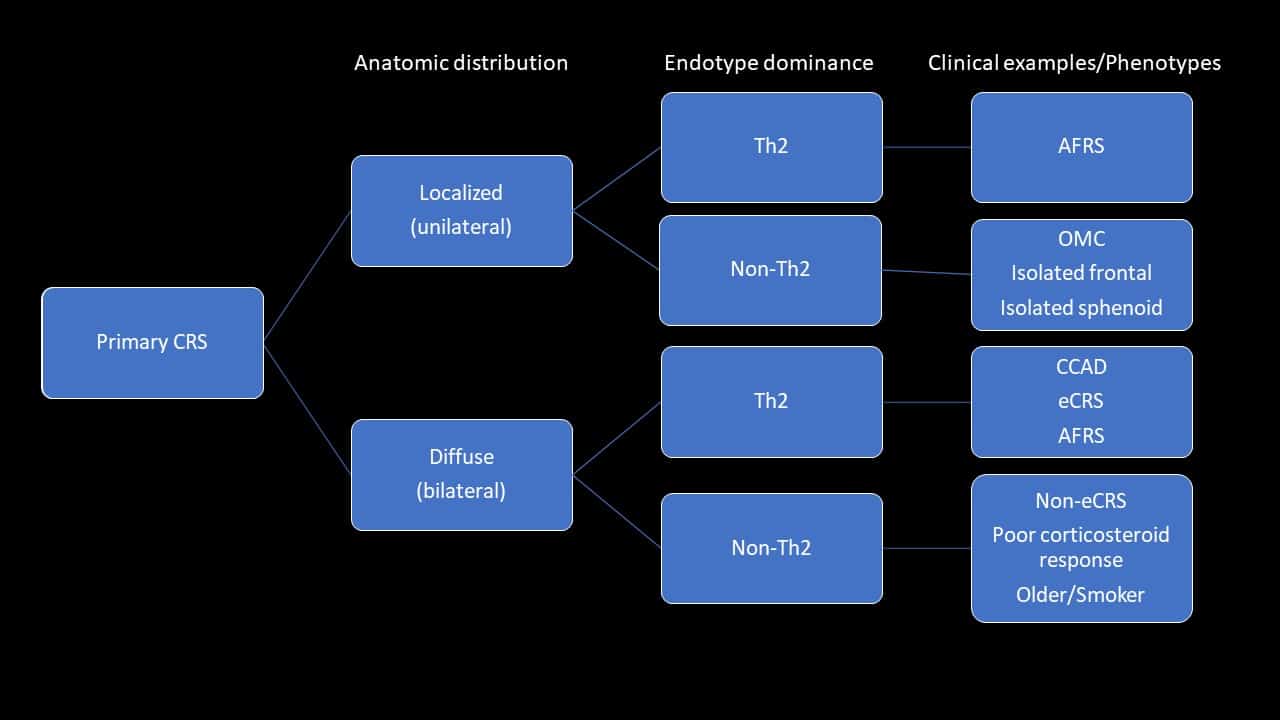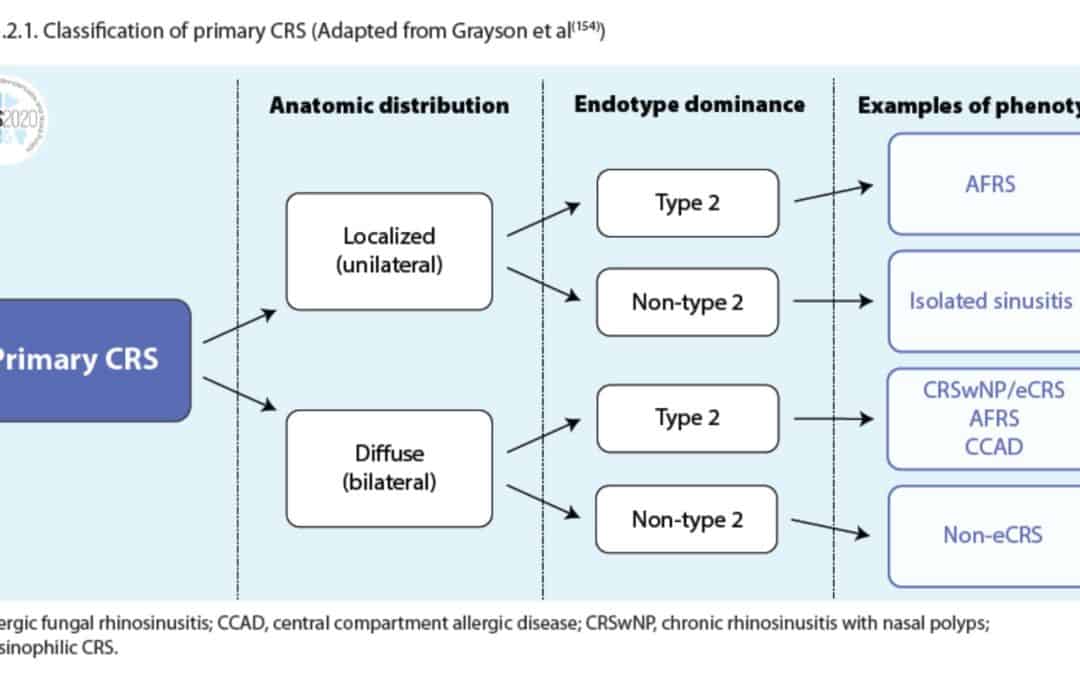Chronic sinusitis is a very mixed bag of disease entitites to a sinus specialist.
Chronic rhinosinusitis (CRS) is a broadly defined process that has previously been used to describe many different sinonasal pathologies from odontogenic sinusitis, allergic fungal sinusitis, to the more contemporary definition of broad inflammatory airway diseases. Previous classification systems have dichotomized these patients into CRS with nasal polyps (CRSwNP) and CRS without nasal polyps (CRSsNP).
In clinical practice, treatment decisions are often based upon clinical history, presumed disease process and molecular pathophysiology. The proposed classification system by EPOS 2020 is simple and practical. It proposes that the functional anatomical compartments involved create the first level of separation into local and diffuse. These are usually unilateral or bilateral in distribution. Diffuse does not imply ‘pan-sinusitis’ but simply that the disease does not confine to a known functional anatomical unit. This takes into account whether local anatomical factors are contributing to pathogenesis. Then the inflammatory endotype dominance separates into a Th2 skewed inflammation as this has both etiologic and treatment implications. The non-Th2 encompasses everything else we don’t know yet about inflammation and may change over time. The phenotypes or clinical examples are CRS entities that have been described and how they align with this system.
The range of conditions that encompass chronic rhinosinusitis to a sinus specialist:

Primary CRS Classificaiton system (Grayson JW, Hopkins C, Mori ES, B. Contemporary Classification of Chronic Rhinosinusitis: Movingbeyond CRSwNP and CRSsNP. JAMA Otolaryngol Head Neck Surg. 2020; )
Less commonly, CRS is secondary to an established systemic disease (mucocillary dysfunction, autoimmune or immunodeficiency) or local pathology (odontogenic, neoplasm). Secondary CRS represents a group of clinical entities in which the sinus disease observed is part of ‘another’ disease process. Secondary CRS is simply an expression of another condition and correction of that mechanism will results in resolution of the CRS. The sinus specialist will look for other conditions that affect the human body, either locally or broadly to explain why a patient develops chronic sinus disease. If there is an underlying ‘secondary process’ then this is addressed but otherwise it is considered primary CRS.

Secondary CRS Classificaiton system (Grayson JW, Hopkins C, Mori ES, B. Contemporary Classification of Chronic Rhinosinusitis: Movingbeyond CRSwNP and CRSsNP. JAMA Otolaryngol Head Neck Surg. 2020; )
Hear a sinus specialist explain the diversity of conditions that encompass chronic rhinosinusitis:
Join our youtube channel for regular interesting research and updates on nose and sinus disorders

